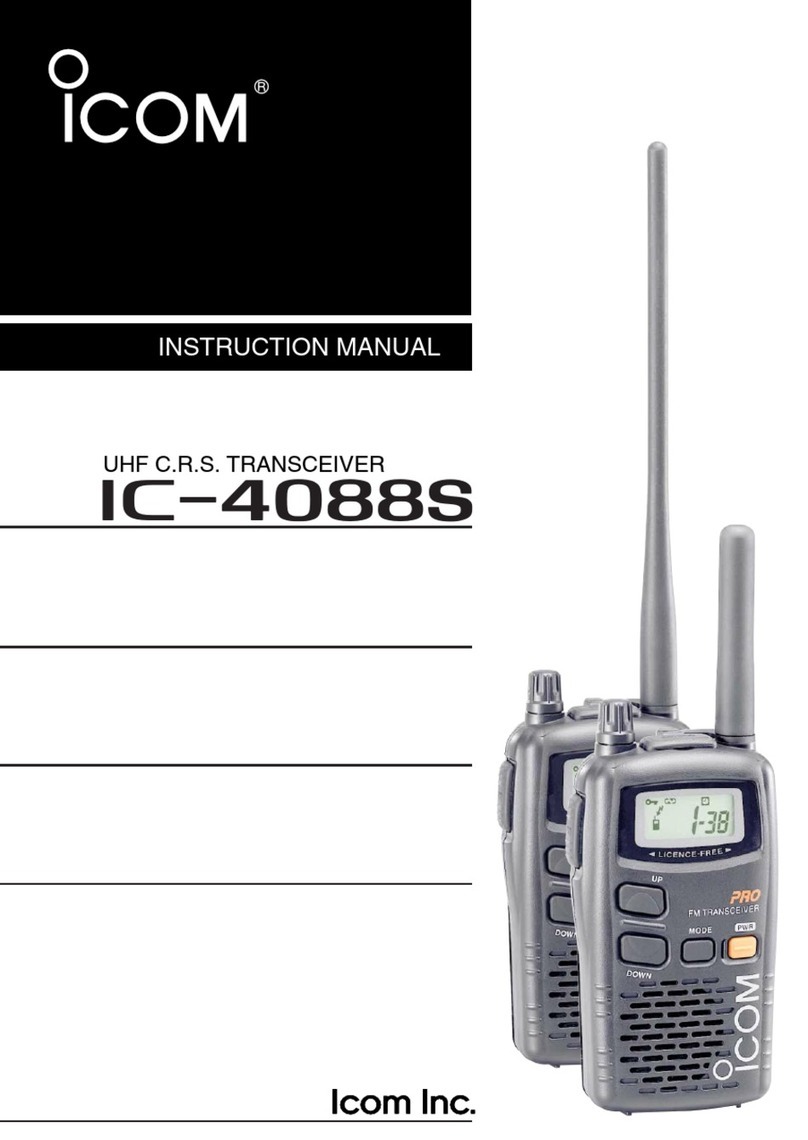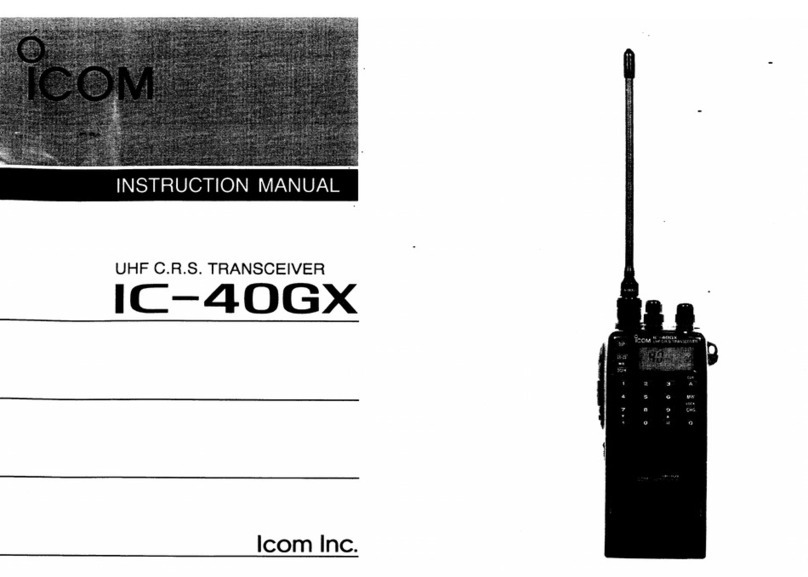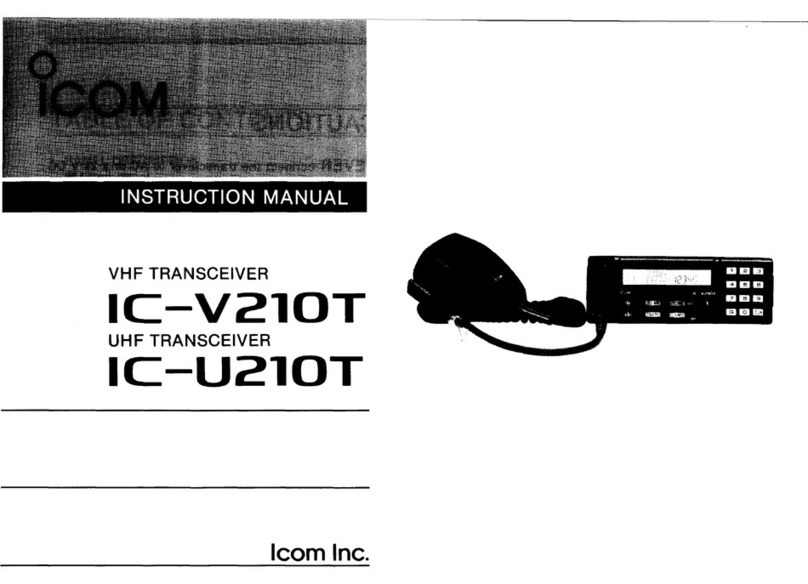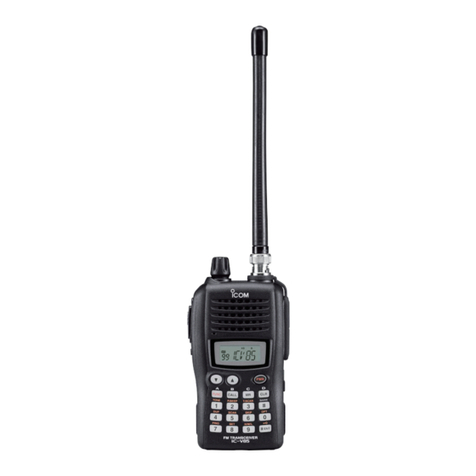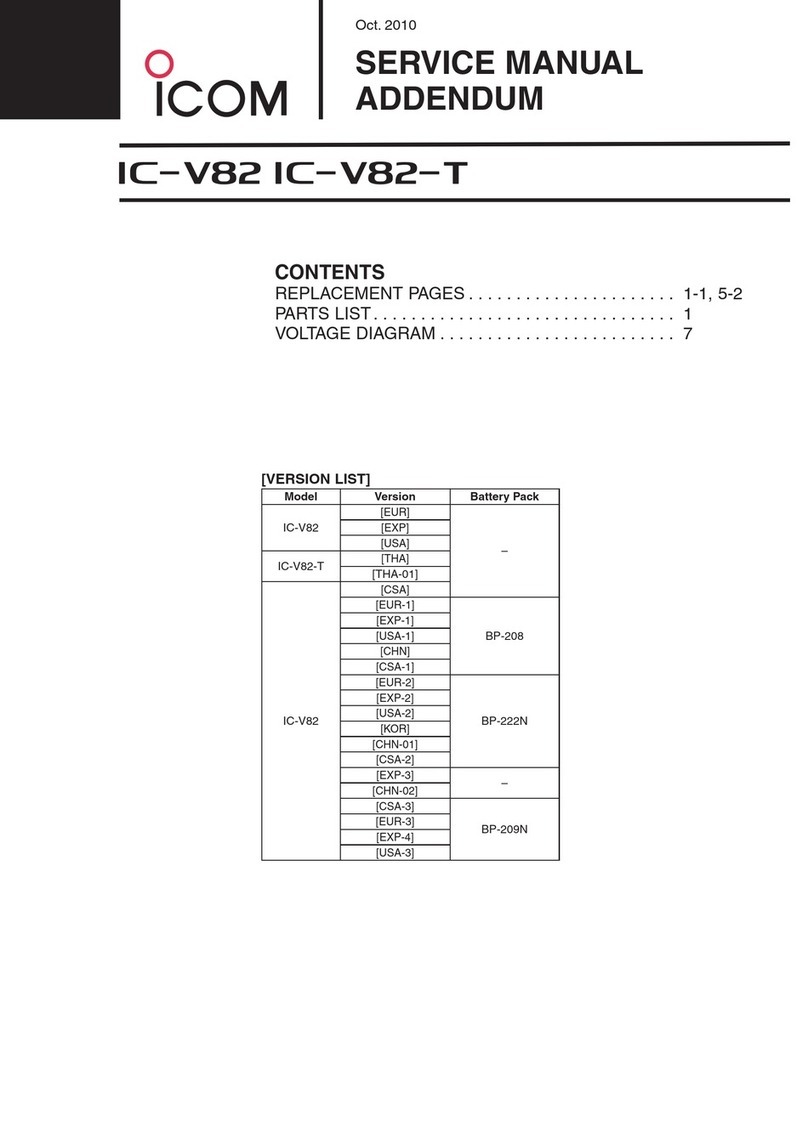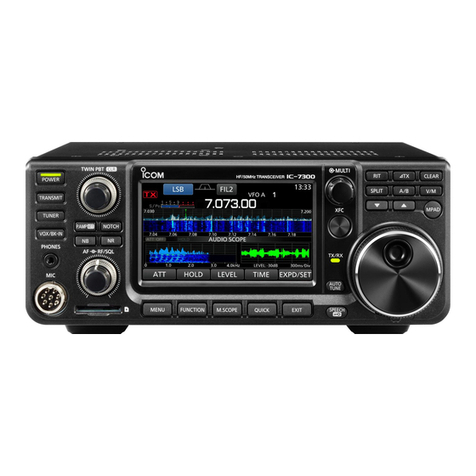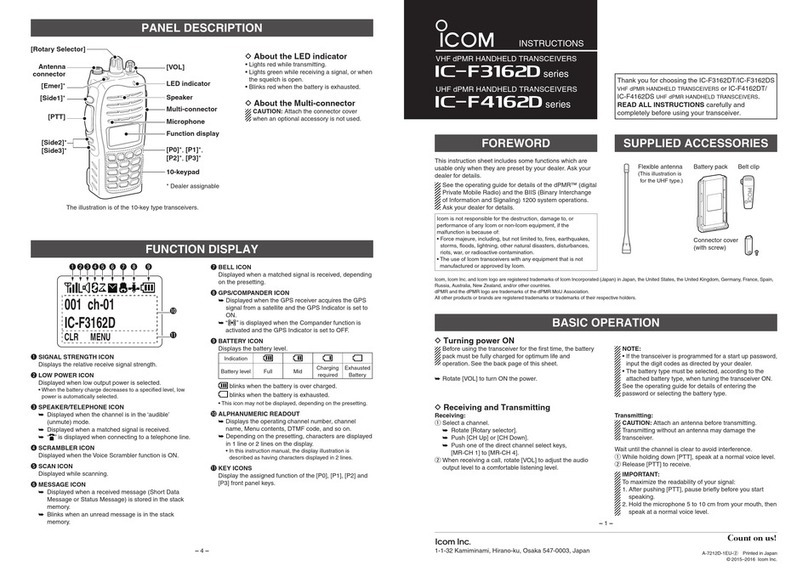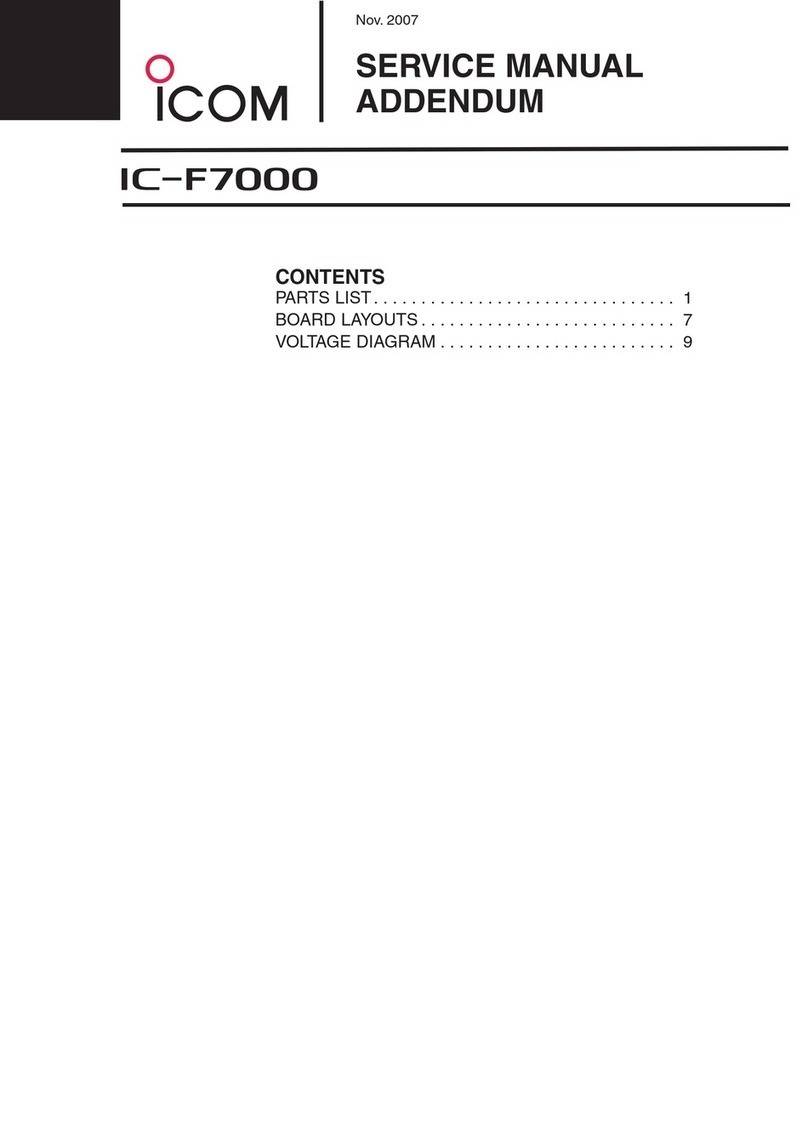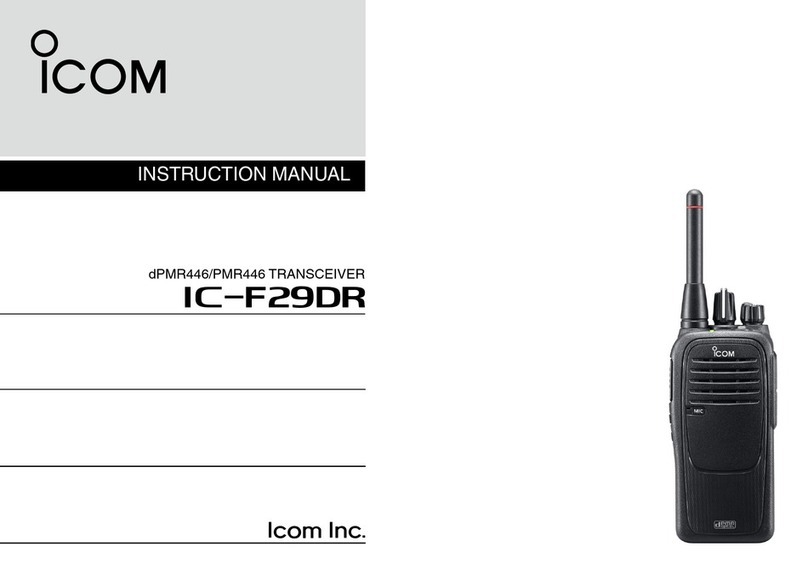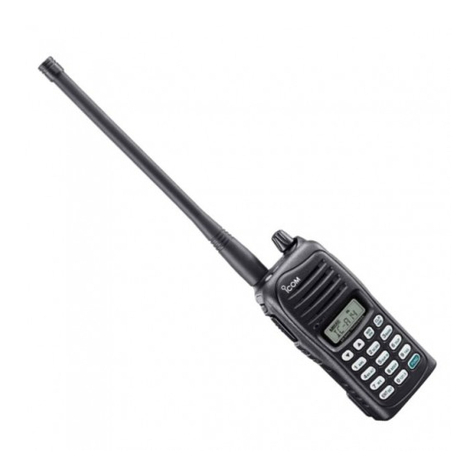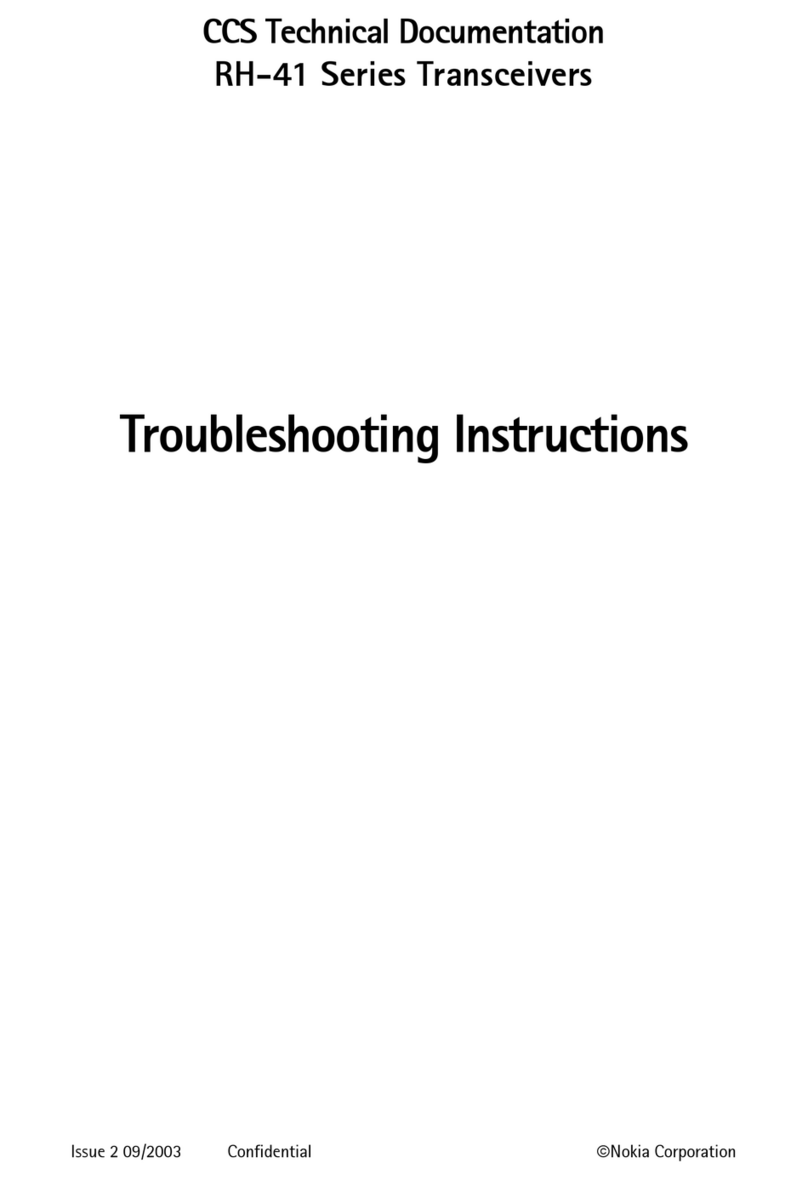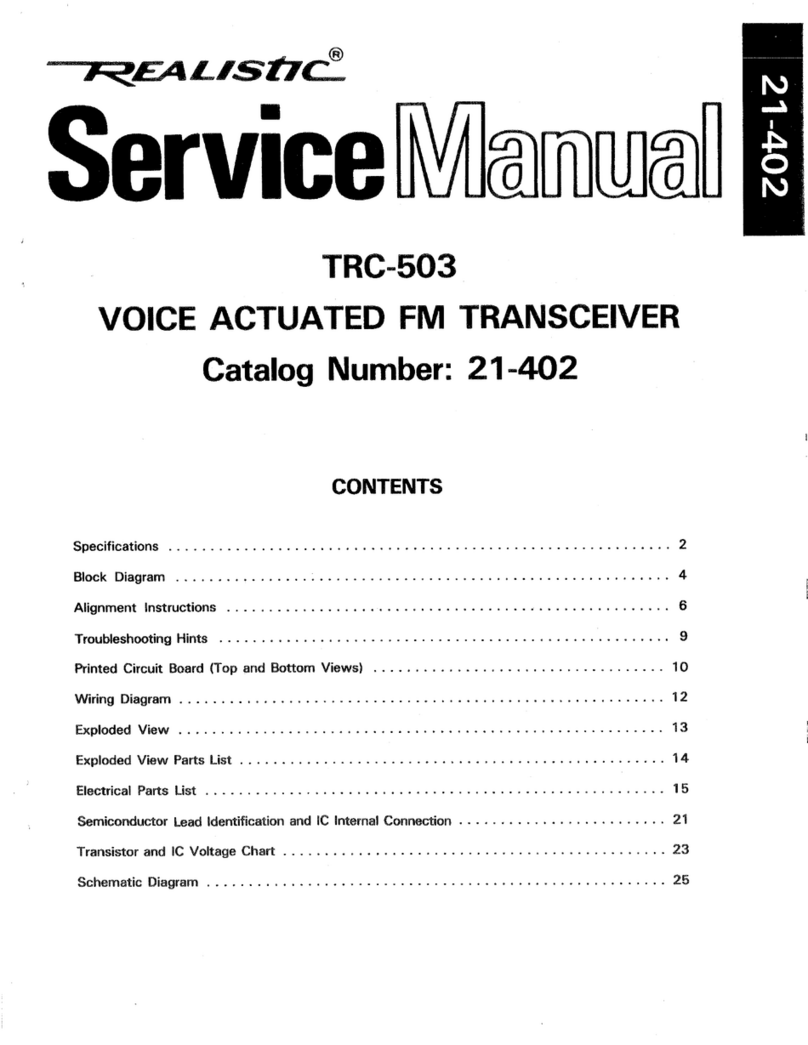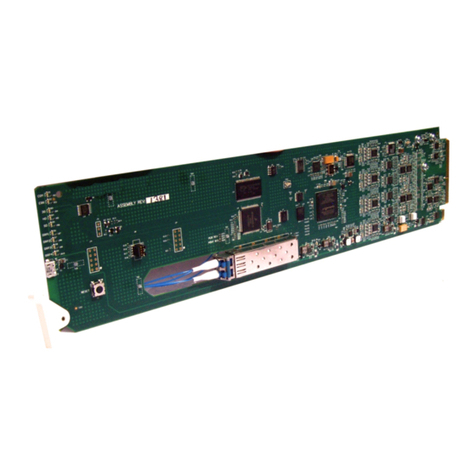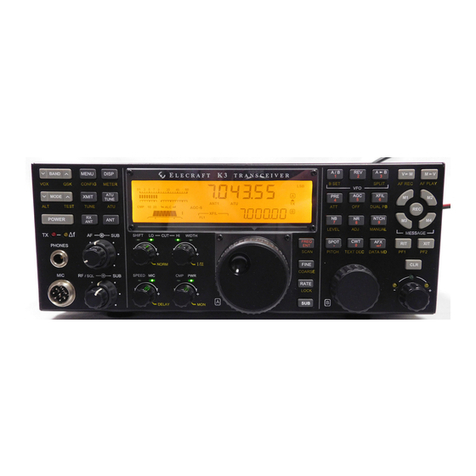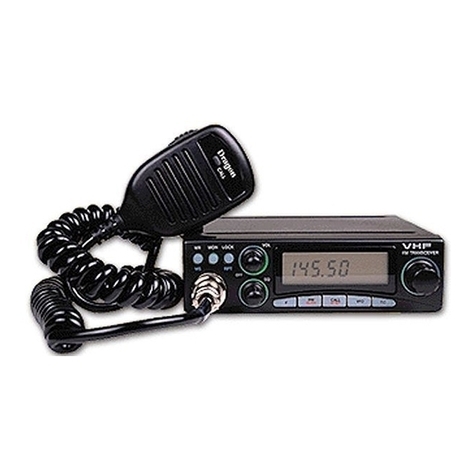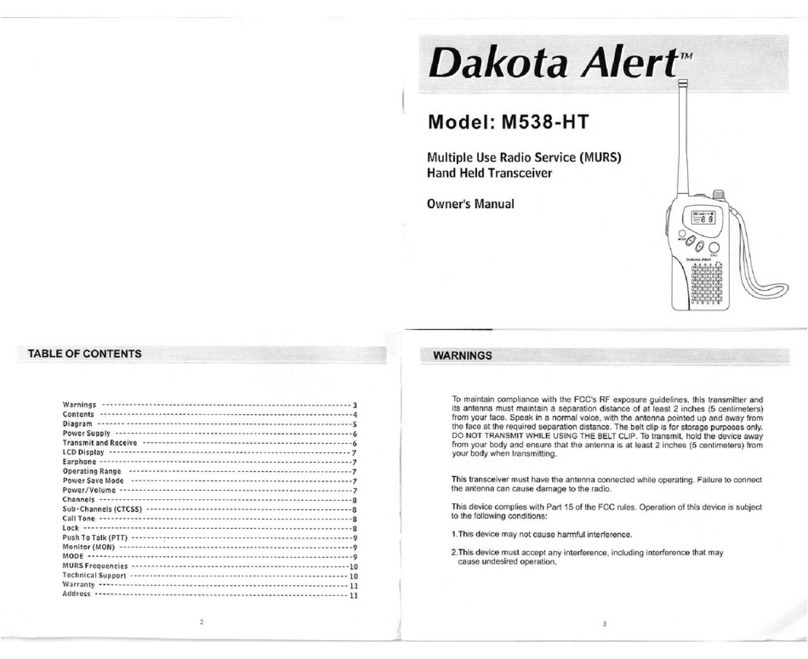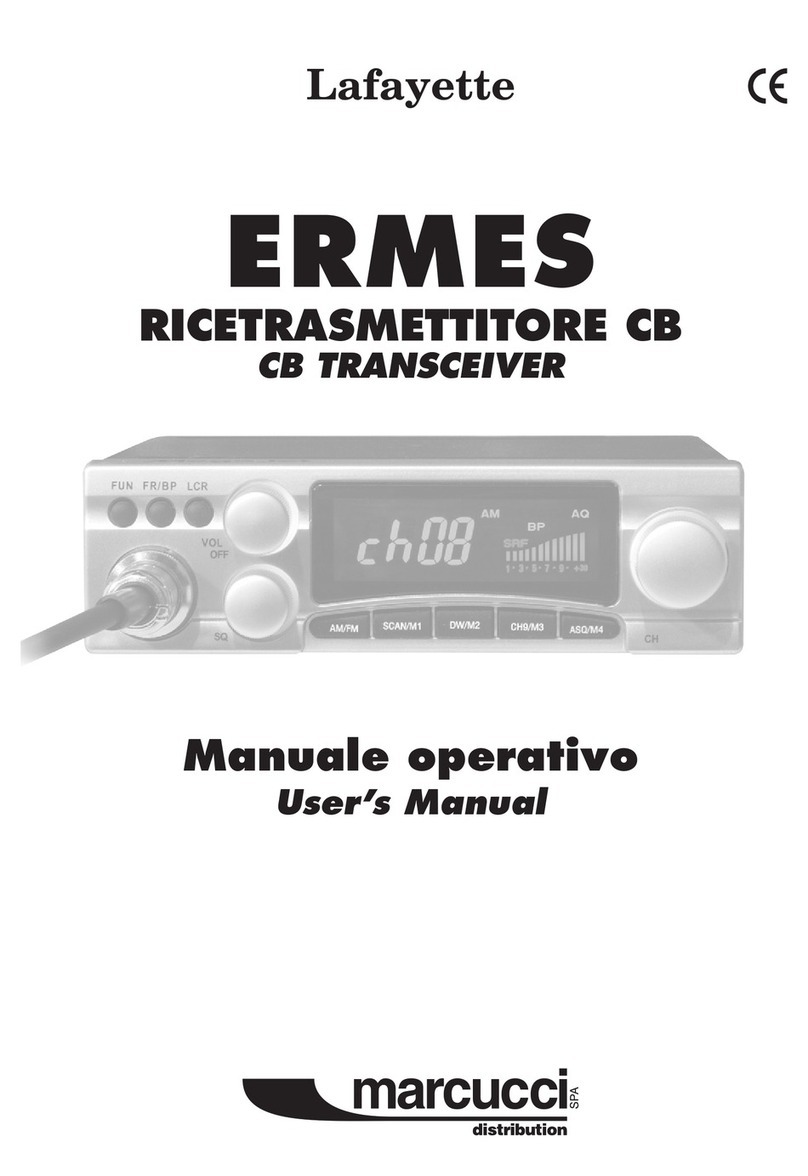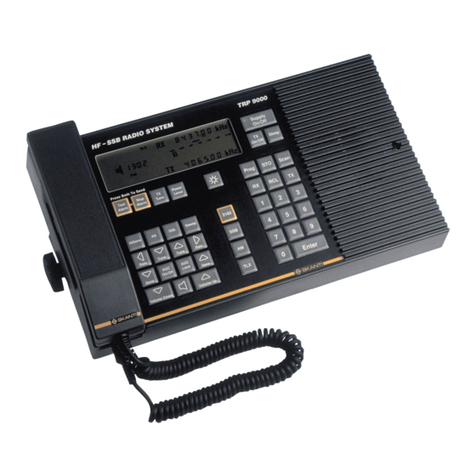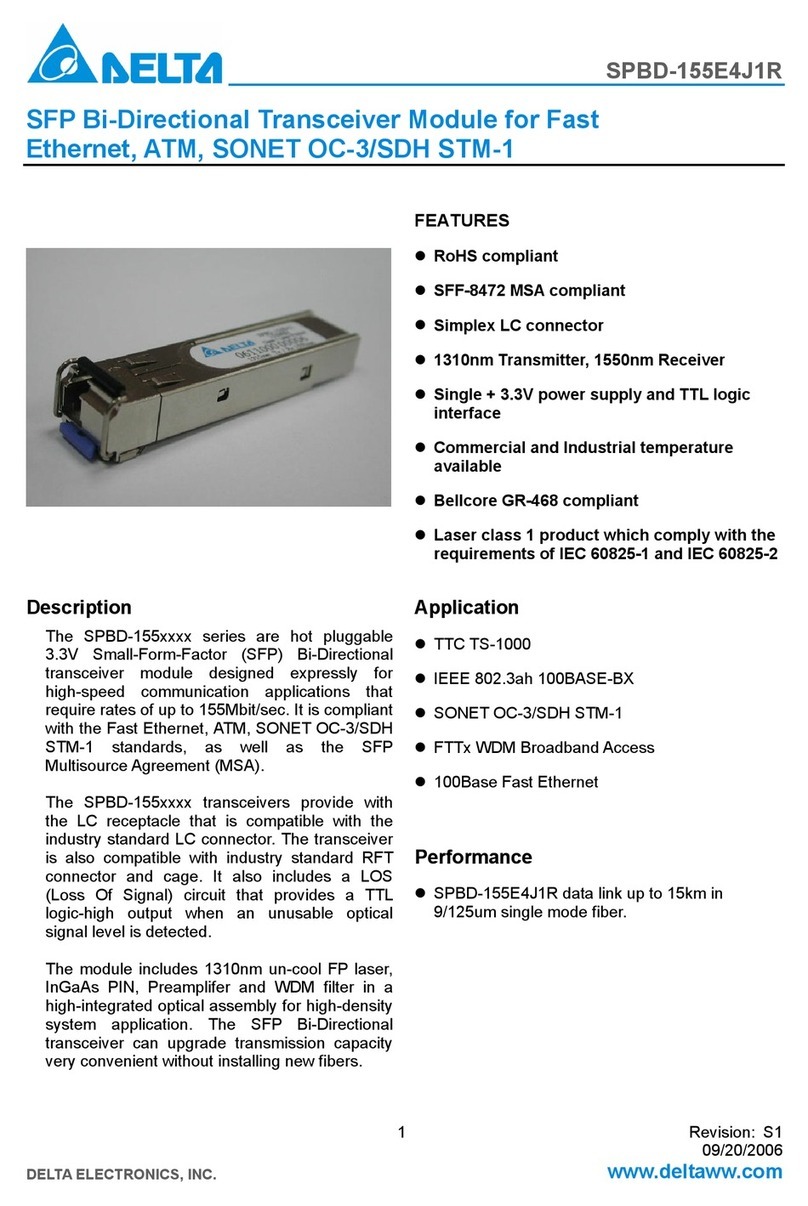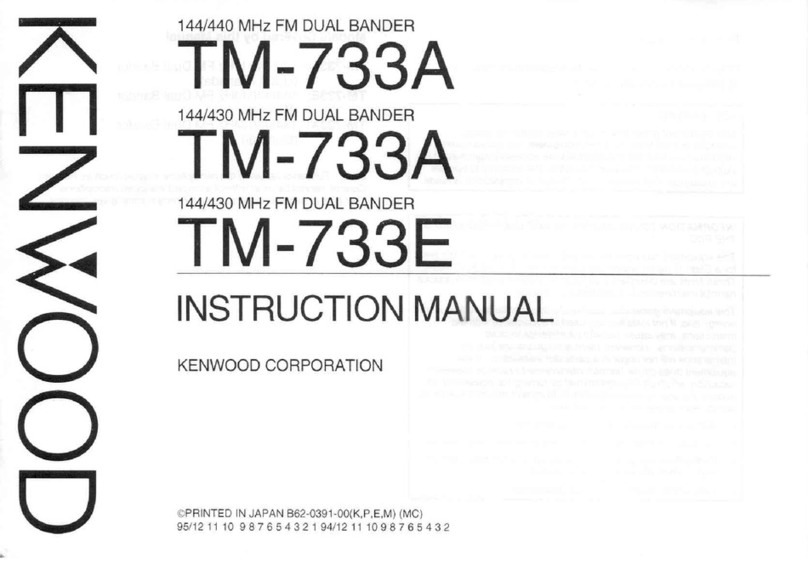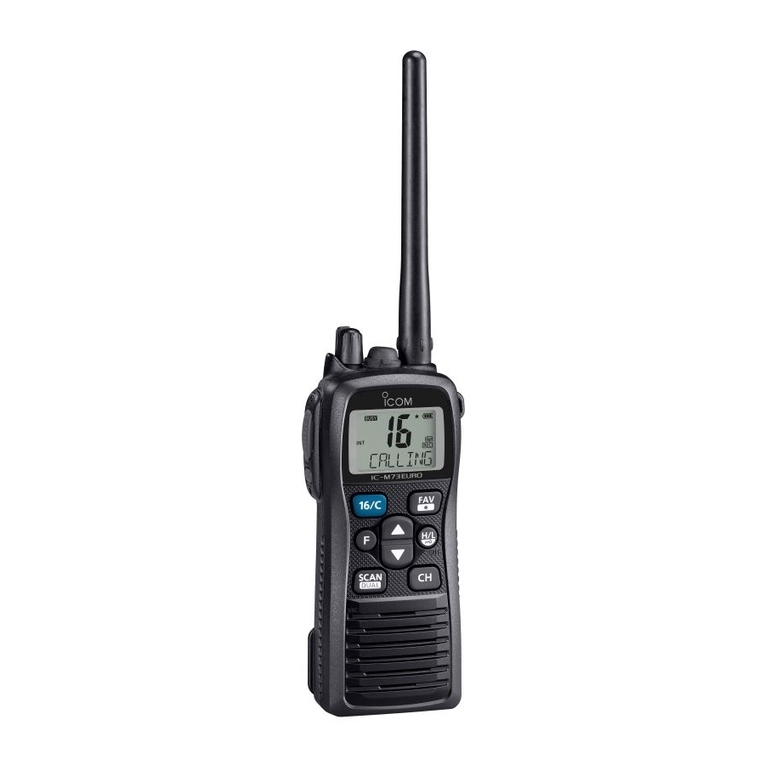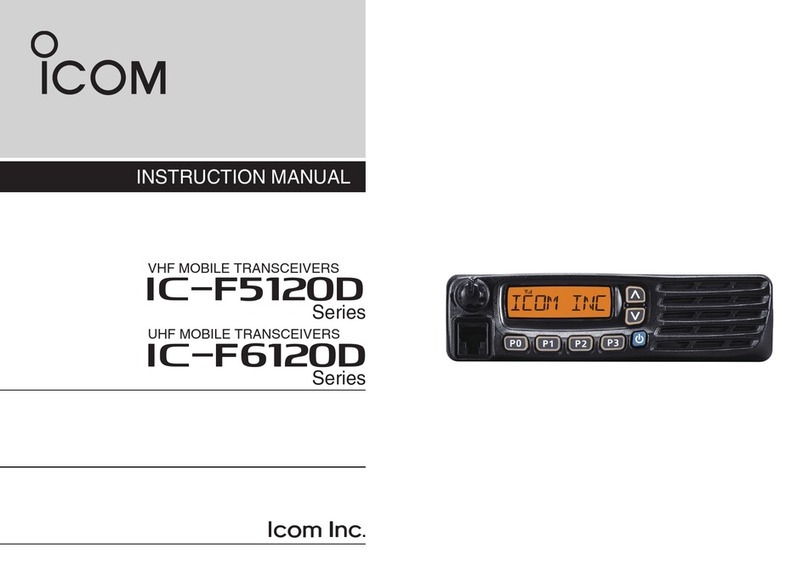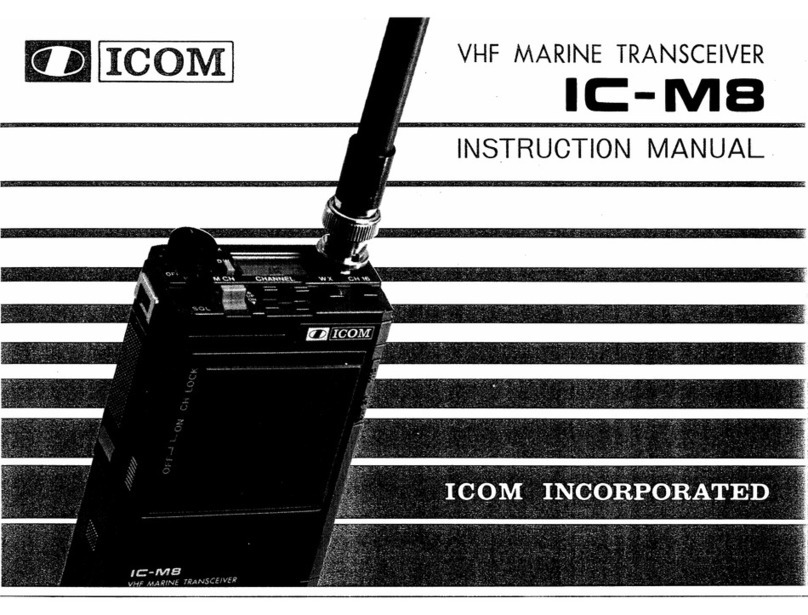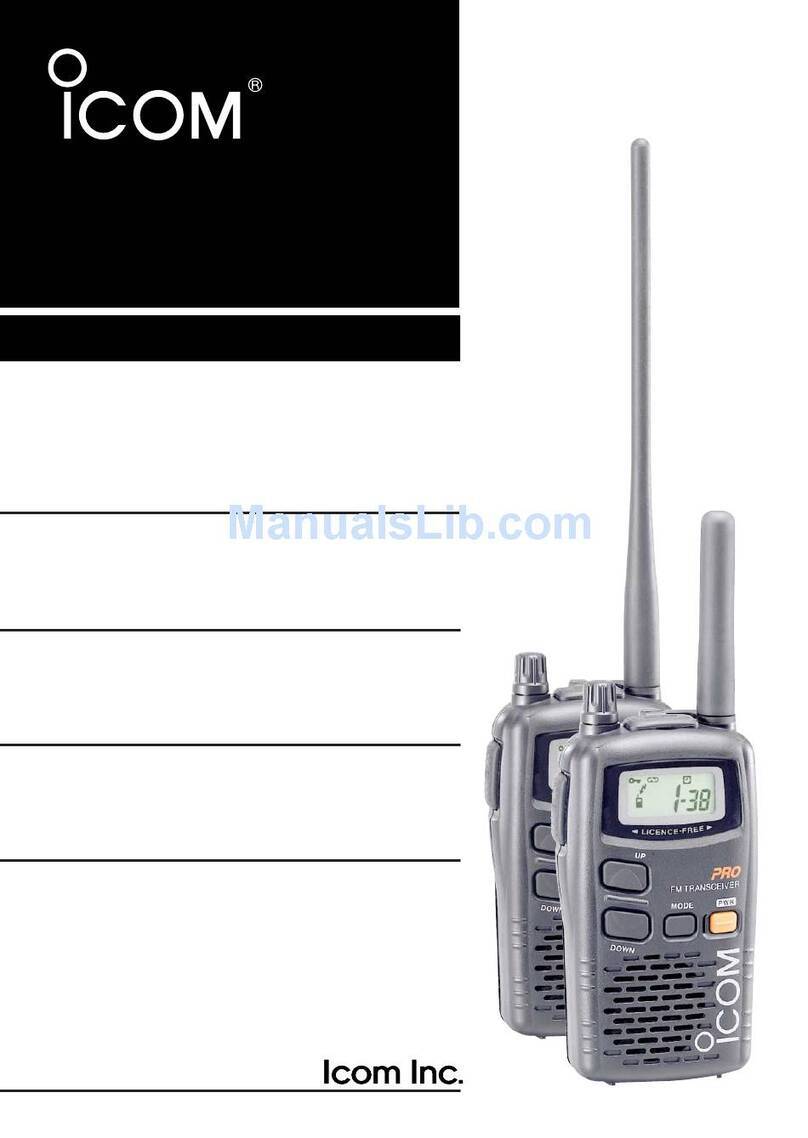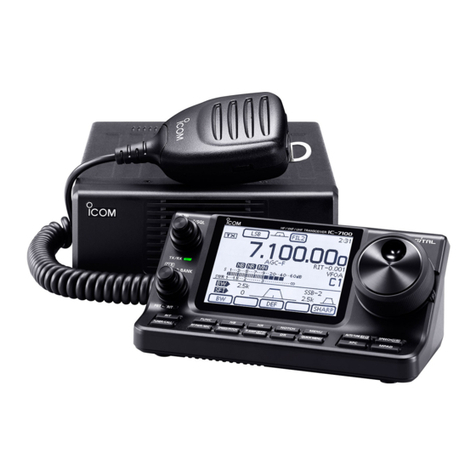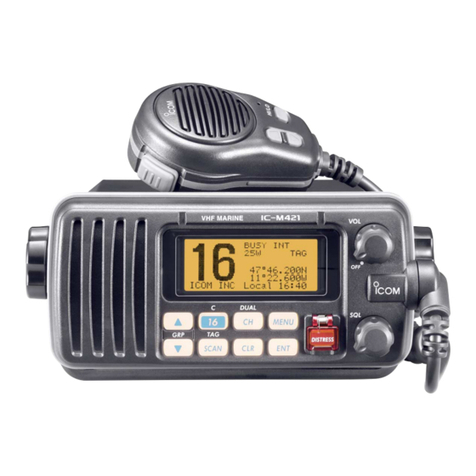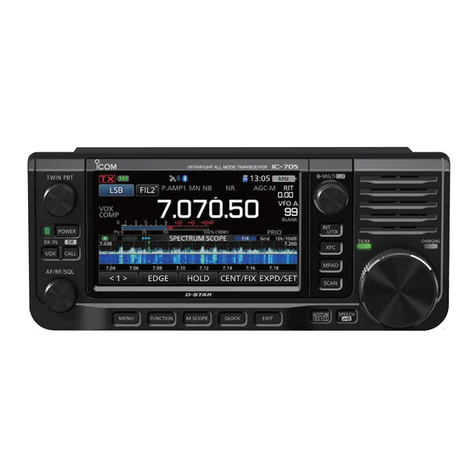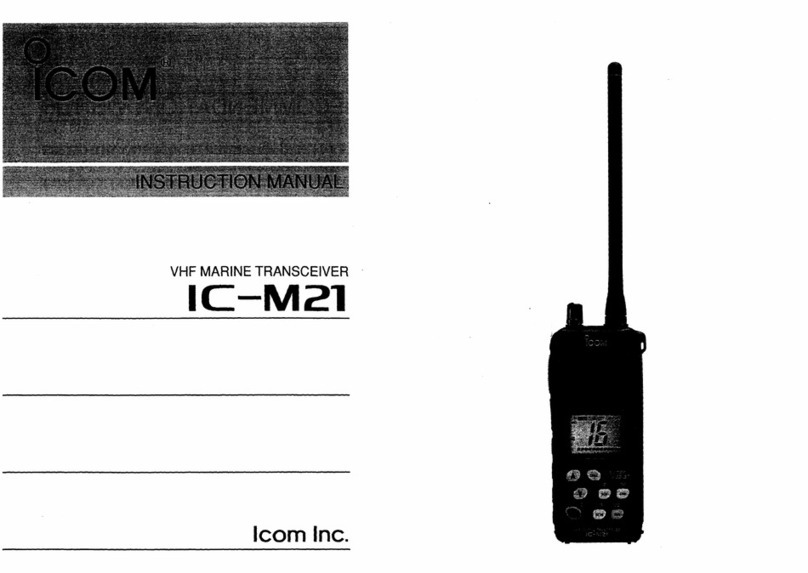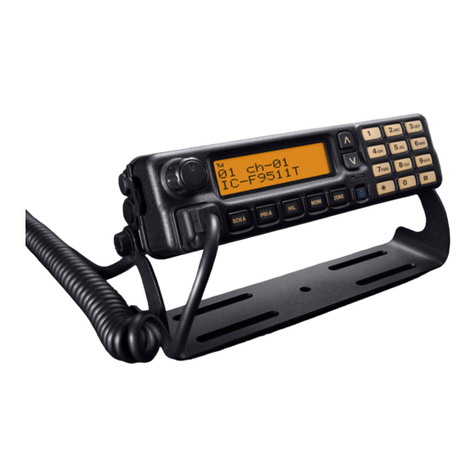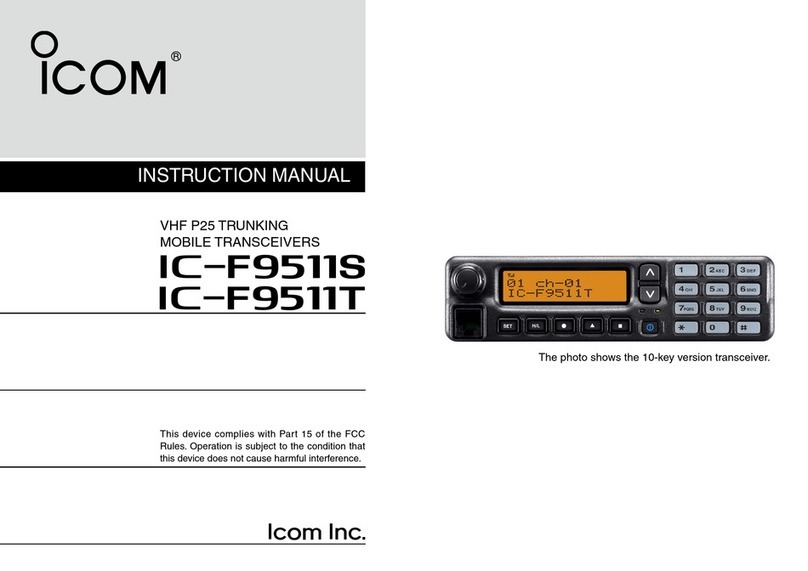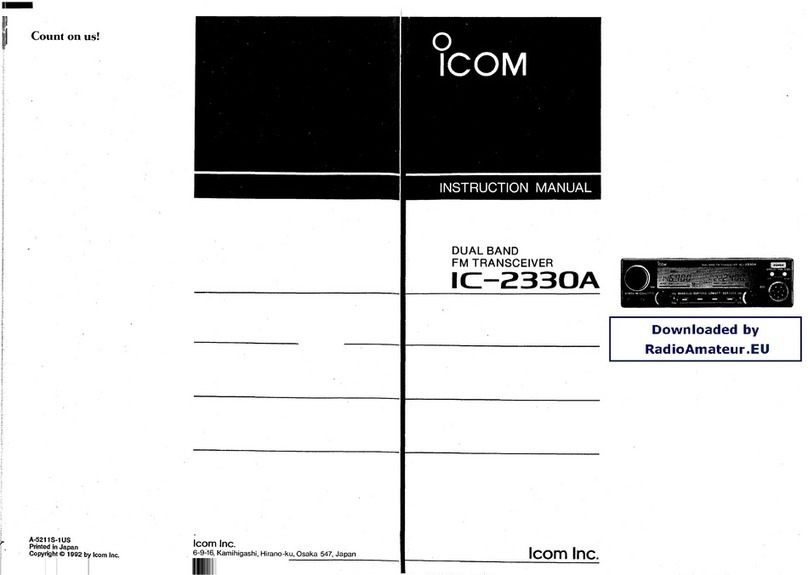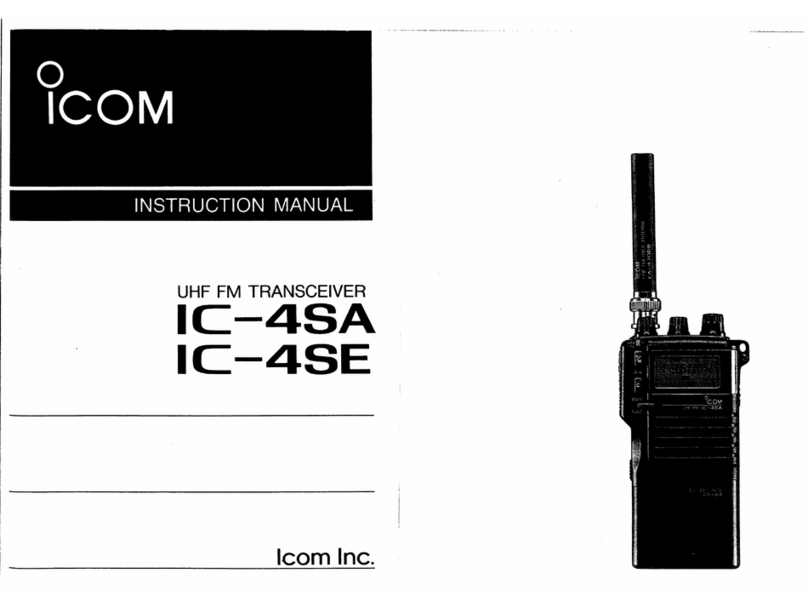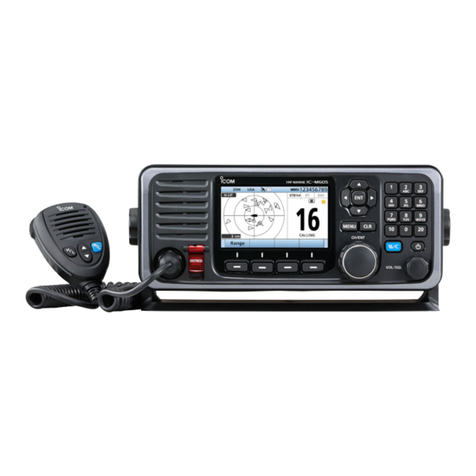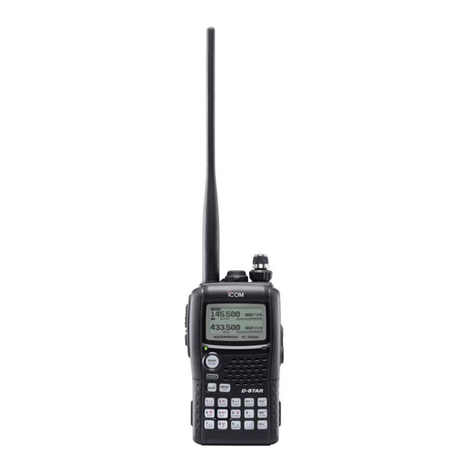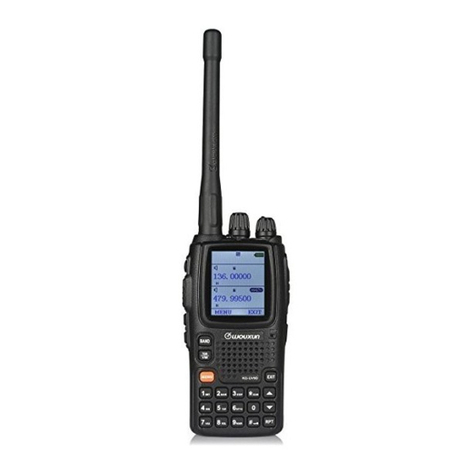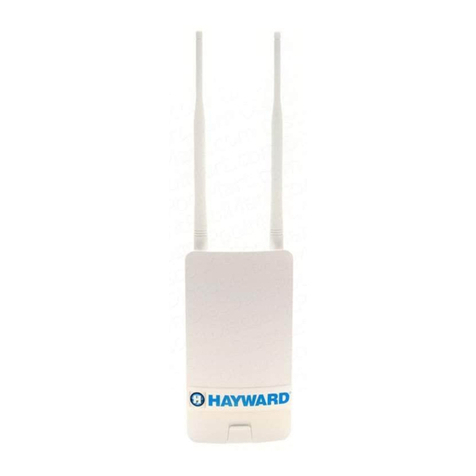
INSTALLATION MANUAL (IM)
VHF AIR BAND TRANSCEIVER
Certied TSO C128a and C169a
A-7186D-2EX-6
iA220
Thank you for choosing this Icom product.
READ ALL INSTALLATION MANUAL carefully and
completely before using this product.
Icom, Icom Inc. and Icom logo are registered trademarks of Icom Incorporated (Japan) in Japan, the United States, the United Kingdom, Germany, France,
Spain, Russia, Australia, New Zealand, and/or other countries.
q Mounting bracket………………………………………… 1
w D-Sub 25 pin connector ……………………………… 1
e Connector pins (M39029/63-368)……………………… 25
r Screws Bind UNC (No. 4 × 3/8)……………………… 2
t K-Lock Nut (No. 4)……………………………………… 2
yBNC-LP ………………………………………………… 1
u Washer (Icom washer V) ……………………………… 1
i C-shaped ring …………………………………………… 1
o Antenna cable clip ……………………………………… 1
!0 Self crimping nut (No. 6) ……………………………… 1
!1 Screw (No. 6 × 1/2)……………………………………… 1
!2 Nut (No. 6) ……………………………………………… 1
!3 Crimp nuts (No. 6) ……………………………………… 6
!4 Speed nut UNC (No. 6) ………………………………… 4
!5 Screws (No. 6 × 1/2) …………………………………… 6
!6 COMM1 sticker ………………………………………… 1
!7 COMM2 sticker ………………………………………… 1
zSUPPLIED ACCESSORIES
qwer t
yuio!0 !1 !2
!3 !4 !5 !6 !7
1. Check the quantity of parts.
Refer to zSUPPLIED ACCESSORIES.
2. Prepare miscellaneous items required for installation.
Refer to miscellaneous items in zSUPPLIED
ACCESSORIES.
3. Prepare the required wiring.
Refer to mCONNECTOR INFORMATION and ,
CONNECTING THE CABLES FOR D-SUB 25 PIN.
4. Assemble supplied mounting bracket and other parts.
Refer to .MOUNTING BRACKET ASSEMBLY.
5. Cut the mounting hole.
Refer to ⁄0 MARKING A MOUNTING HOLE.
6. Mount the transceiver into the mounting bracket.
Refer to ⁄1 MOUNTING TO THE BRACKET.
7. Check the transceiver operation.
Refer to ⁄2 OPERATION CHECK.
xIMPORTANT
bINSTALLATION PROCEDURES ,CONNECTING THE CABLES FOR D-SUB 25 PIN
mCONNECTOR INFORMATION
The following accessories are supplied with the transceiver.
Carefully check the quantity of each part.
The following items are required for installation but are NOT
supplied with the transceiver.
• VHF antenna for the air communication band
• Various cables
• An antenna cable with a BNC connectors (50 Ω)
• Switches to be mounted on the aircraft yoke
• Headphones (500 Ω)
• Low-impedance carbon or dynamic microphone
• Preamplier for a dynamic microphone
DCOMM1 and COMM2 stickers
When two transceivers are installed, attach the supplied
COMM1 and COMM2 stickers to distinguish one from the
another.
COMM
COMM1 or COMM2 sticker
READ THIS INSTALLATION MANUAL CAREFULLY
before install the transceiver. This installation manual
contains important safety instructions.
NEVER install the transceiver where normal navigation of
the aircraft may be hindered.
NEVER install an antenna near any aircraft projection,
engine, or propeller.
Install a circuit breaker between the aircraft battery and the
transceiver.
Check operation after installation.
Install the transceiver according to the procedures of this
installation manual.
The antenna should be spaced at least 50 cm (1.6 feet)
from any position occupied by any person on board the
aircraft or the vehicle.
DD-sub 25-pin
12345678
91011 12 13
Pin I/O Description Pin I/O Description
1 In Memory Channel Switch* 14 –Aircraft ground
2 In Transmit/receive Interlock 15 –Aircraft ground
3 In Frequency Exchange Switch* 16 In PTT*
4 In DC power + (13.8/27.5 V) 17 In Intercom switch*
5 In DC power + (13.8/27.5 V) 18 Out External speaker (4 Ω/5 W)
6–RS-232C Serial data (GND) 19 –External speaker (GND)
7Out RS-232C Serial data (TXD) 20 Out
Headphones audio (500 Ω/60 mW)
8 In RS-232C Serial data (RXD) 21 In External Dimmer control
9–Microphone (GND) 22 –Headphones audio (GND)
10 In Microphone 1 (600 Ω)23 In Auxiliary audio 3
11 In Microphone 2 (600 Ω)24 –(reserved)
12 In Auxiliary audio 1 25 –(reserved)
13 In Auxiliary audio 2
*Ground to activate.
DPower cable wiring
Use two pairs of #20 AWG wire for the power and power
grounding connections.
Rear view
513
14 25
1
15
4
Circuit breaker
(10 A)
+
13.8 V DC
or 27.5 V DC
Power ground
_
•Circuit breaker
To prevent physical damage, a 10 A circuit breaker MUST
be installed in the DC power line in the aircraft. Install the
circuit breaker in the aircraft breaker panel or instrument
panel to ensure easy access during ight.
•Power Ground
Connect the transceiver power ground to the aircraft
ground.
D
Yoke-mounted memory and frequency
exchange
switches
For the yoke-mounted memory and frequency exchange
switches, use a two-position spring loaded rocker switch or
two separate momentary push switches.
Rear view
OR
14 25
113
14 25
Memory switch
Frequency exchange switch
Frequency exchange switch
3
DTransmit/receive interlock connections
When two transceivers are installed, connect pin 2 to the
other transceiver’s PTT line, and connect pin 16 to the other
transceiver’s interlock line to prevent both transceivers from
simultaneously transmitting.
However, when two transceivers are installed through a
dual audio panel, the connections are not necessary.
DAudio line connections
Use #20 ~ #24 AWG wires for connections.
Rear view
113
14 25
113
14 25
910 11
16 17
18
19 20
910
16
18
19
20
12
22
23
22 23
12
PTT switch
• One headset
• Two headsets with intercom
External
speaker
Intercom switch
Microphone
jack 1
Microphone
jack 2
Headphone jack 1
Headphone jack 2
PTT switch
Microphone
jack
External
speaker
Headphone jack
Audio
control
panel
Audio
control
panel
Auxiliary audio 1
Auxiliary audio 2
Auxiliary audio 3
Auxiliary audio 3
Auxiliary audio 2
Auxiliary audio 1
NOTE: If any external intercom system is in use, we
recommend that you disable the transceiver’s intercom
function to prevent degradation of the audio signal.
If any degradation exists, leave pin 17 disconnected and
disable the transceiver’s intercom function by following the
steps below.
1. While holding down [DUAL], rotate [VOL] to turn ON
the transceiver.
• The conguration menu is displayed.
2. Rotate [O-DIAL] to select “INCOM MODE.”
3. Rotate [DIAL] to set “INCOM MODE” to OFF.
4. Push [RCL] to exit the Configuration menu and restart
the transceiver.
• “ICS” disappers.
Model Part Number1Version Equipment Class Channel Spacing Carrier
Power
IC-A220 IC-A220T-2-01/
IC-A220T-2-02 USA-06 Receiver: D, E 8.33/25.0 kHz 8 W
Transmitter: 4, 6
(1) Part Number
( IC-A220T ) - (
2
) - (
01
)
( IC-A220T ) - (
2
) - (
02
)
Base Part Number - (SW/HW Identier) - (TSO Minor Change Number)
SW/HW Identier 1: Hardware Change Only
2: Software Change Only
3: Hardware + Software Change
TSO Minor Change Number TSO Minor Change Number with initial value 00 and an increment of 1
Operating
Temperature
Range
–20°C to +55°C. For more details see the Environmental Qualication Form on the
Dealers Only page on www.icomamerica.com.
The EQF part number is A220-0651-0001.
Environmental
Testing
See Environmental Qualication Form on the Dealers Only page on
www.icomamerica.com.
The EQF part number is A220-0651-0001.
cSPECIFICATIONS
vINSTALLATION LIMITATION
The conditions and tests required for TSO approval of
this article are minimum performance standards. Those
installing this article, on or within a specic type or class
of aircraft, are responsible for determining that the aircraft
installation conditions are suitable for the TSO article.
TSO articles must have separate approval for installation
in an aircraft. The article may be installed only if performed
under 14 CFR part 43 or the applicable airworthiness
requirements.
NEVER bend the cables sharply or place the cables too near
the aircraft control cables.
DO NOT place the transceiver where hot or cold air blows
directly on it.
AVOID placing the transceiver in areas with temperatures
below –20˚C or above +55˚C (–4˚F to +131˚F).
NEVER connect the transceiver to a power source
using reverse polarity. Reverse polarity will damage the
transceiver.
To prevent voltage drops, solder or crimp the cable lug
when connecting the DC power cable to the power supply.
Use a 50 Ω, vertically polarized, VHF air band antenna.
VSWR should be less than 2.5:1.
Mount the antenna on a at metal surface or install a ground
plane of at least 120 cm2 (18 in2).
nPRECAUTIONS


